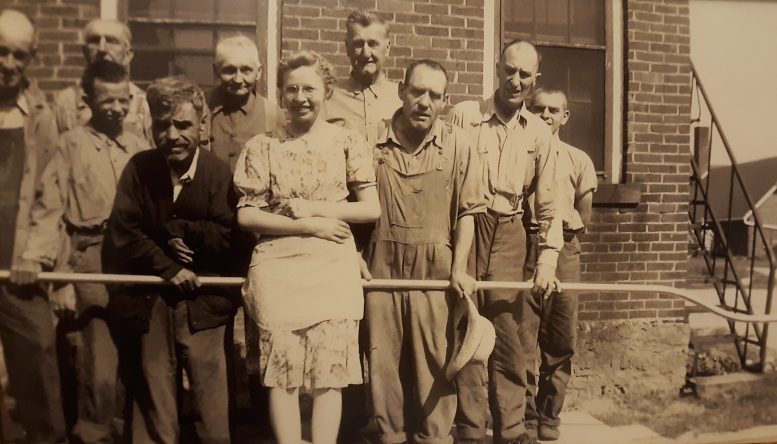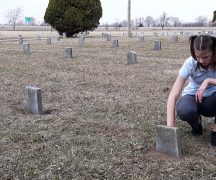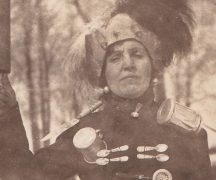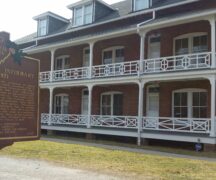By JAN LARSON McLAUGHLIN
BG Independent News
Long before there were safety nets like nursing homes, food pantries, subsidized housing and hospitals, there were “poor farms” to care for those who were old, sick, lame, or blind.
Despite being labeled “poor farms,” they were not places of despair, according to a new exhibit at the Wood County Historical Center.
In Ohio, all 88 counties had poor farms, starting in the mid 1800s to 1936 when public charity transitioned into more modern day social services.
Wood County’s poor farm was located on County Home Road, southeast of Bowling Green. The sprawling building remains there today as a historical center. To commemorate the 150th year of the opening of the county poor house, a new exhibit will soon open at the center – “For Comfort and Convenience: Public Charity in Ohio by Way of the Poor Farm.”
By all accounts, Ohio’s poor farm system provided a gentler life for the old and sick than many states, according to Holly Hartlerode, curator at the historical center.
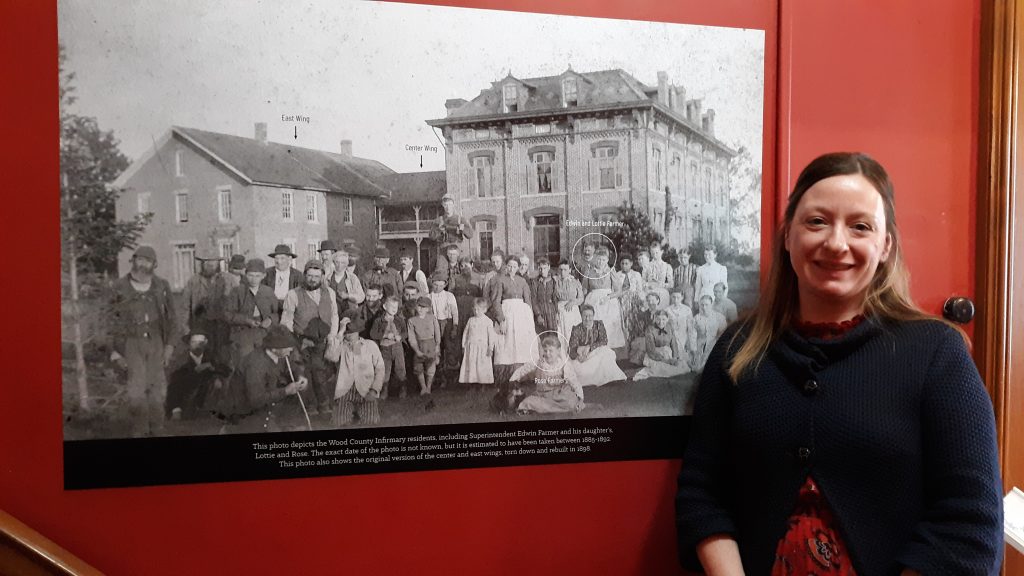
“We are not the only state that had a poor farm system, but we were very successful, which we’re proud of,” she said.
“It is my deepest goal as curator that people do not see places like this as negative,” Hartlerode said.
When Wood County’s poor farm opened in 1869, there were no public safety nets in place. “There was no social welfare, so where did people go? How do we best care for people?” Hartlerode said, noting society’s struggle.
The model for the poor farms caring for paupers came over with the colonists. Based on the British workhouse system, almshouses were erected in New England, and many state constitutions offered public charity relief. In Ohio, the almshouse system was modified to fit the needs of its citizens.
After the Civil War, states began to look at the best ways to provide comfort to those in need, at the convenience of those charged with dispensation of public charities.
Every county in Ohio had a home to care for the “worthy poor.”
The poor farms provided no luxuries, but in most cases they offered plenty to eat, warm places to sleep, clean conditions, and a feeling of community. The state required a certain amount of cubic feet per person, separate living and dining areas for men and women, suggested wholesome menus, clean laundries, chapels, and building recommendations for sturdy structures.
“You can really see how much they cared,” Hartlerode said.
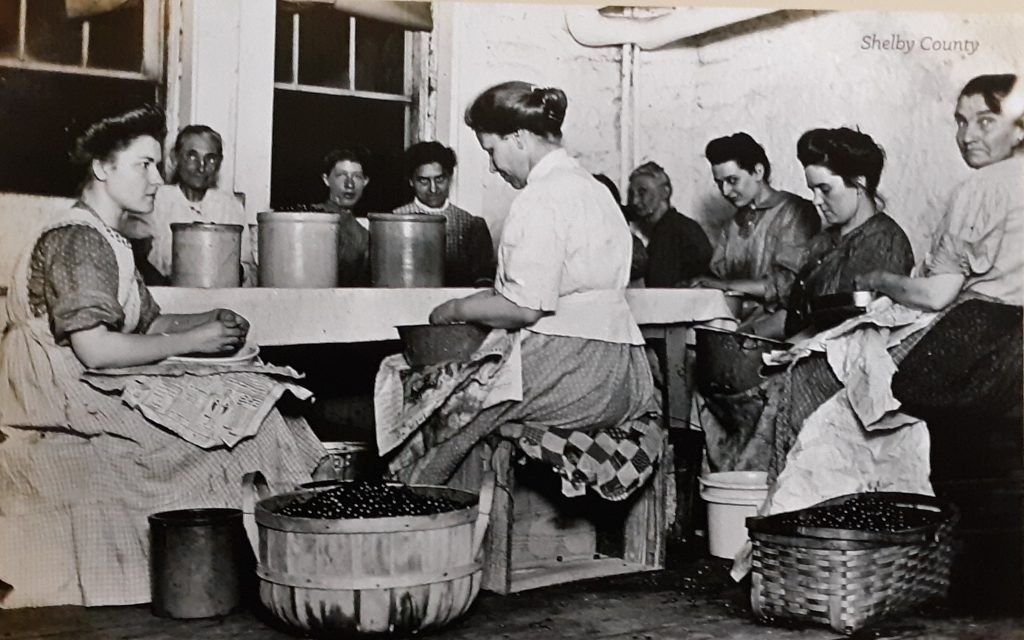
Wood County’s poor farm sat on 200 acres, some of which was planted and harvested by the more able-bodied residents. The farm housed anywhere from 40 to 70 people at a time.
“They were very self-sufficient,” she said. “Remember, these people were farmers, too.”
The state believed that children should be housed elsewhere because they were liable to contamination by association with “vile men and viler women.” There were also concerns that children brought up in such settings would become satisfied with lives of poverty.
However, some children did live with their mothers at the home.
The farms also took in more than just the sick and poor – those “worthy poor” who were there due to misfortune and mismanagement. In the terminology of the day, they also housed “idiots” and “epileptics.”
Old black and white photos show the residents sitting around dining room tables with linens and china dishes. They show images of women knitting or cleaning berries in the kitchen – with smiles on their faces.
The exhibits show the bedrooms with old magazines, hairbrushes, metal hair curlers, spectacles, Bibles and baskets of knitting yarn.
The Wood County poor farm was recognized for being managed with care for the residents. Edwin and Charlotte Farmer acted as superintendent and matron from 1878 to 1904, followed by Frank and Lottie Brandeberry from 1904 to 1949.
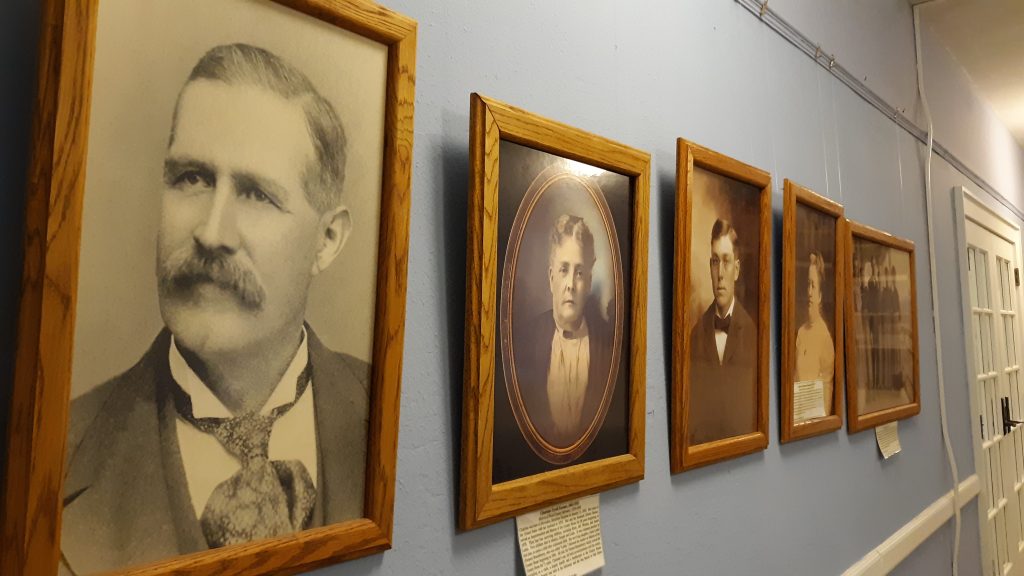
Wood County’s home was regarded as a model. “Infirmary thoroughly investigated from cellar to attic, from pigsty to barn and burial grounds. We also open closet doors, but have never had a case of faintness from the pent up odor,” one report noted.
“I want there to be a sense of pride about this home. I really do,” Hartlerode said. “It was the hospice of the day. People came here to die.”
While they were at the home, “they became extended family. How wonderful is it that we could work together for the care of people.”
In addition to telling the story of the Wood County poor farm, the exhibit gives a glimpse into the past and present of the other 87 county facilities in Ohio. Photographer Jeff Hall visited all the sites of former county poor farms and photographed their present existence.
A story from Fairfield County Infirmary showed the strong belief that cleanliness is next to Godliness. As soon as a new inmate arrives, he is examined carefully, the report stated. “His clothing, if filthy, and it usually is, is removed and burned. The new inmate is then taken to the bathroom and given a good bath. This is sometimes strenuously objected to by the victim. One old lady we got in a few weeks ago said she never had a bath in her life and she was 73 years old, and thought she was too old to begin now. Nevertheless, she got a bath. Then the matron asked her how she felt and she thought it did her good.”
Butler County infirmary superintendent said infirmaries are no longer the poor houses of the past. “Humane people with charitable instincts believe it to be their duty to provide for unfortunate in as good manner as possible. The inmates of an infirmary are not there by reason of choice, but by necessity.”
The state suggested that infirmary buildings should be constructed of brick or stone, be plain and durable – “but not a cent for mere show or useless ornamentation.”
Infirmaries in cities were to be “free from tramps and from visitors who expect feed for their horses and dinner for themselves.”
The names continued to shift, from poor farms, to infirmaries, then in 1919, the term “infirmary” was abandoned since it indicated the homes were only for the sick and dying. The term “county home” was adopted to place a positive spin on this type of public charity building.
The name change would focus on empathy first and evaluation of the pocketbook second.
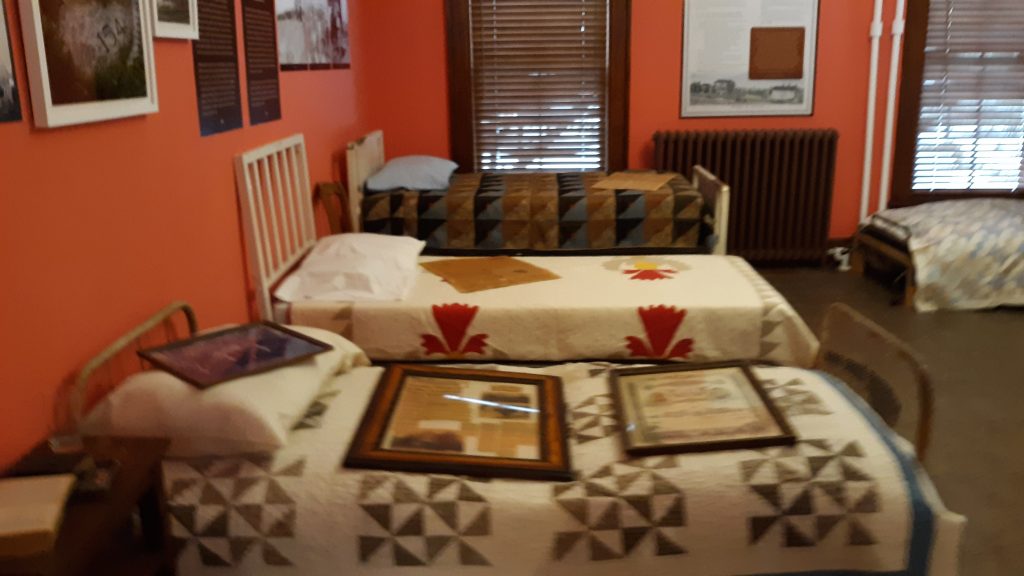
In 1920, a movement began to abolish county homes because they were “badly mismanaged, maintained at an exorbitant costs, and the practices of inhumanity and neglect were common.”
By 1929, the state of Ohio allowed for the closing of the former poor farm sites. One of the biggest issues noted was “how to cope with remarkable increase in feebleminded population.”
By 1935, the old style poor houses were gone. Many like Wood County’s became more like nursing homes for a period.
The new exhibit, which opens on Friday, Feb. 1, was made possible by the Ohio Arts Council and the Ohio Humanities Council.
The museum will be open for self-guided tours Monday – Friday, 10 a.m. to 4 p.m., and weekends from 1 to 4 p.m. (closed on government holidays). Admission is $7 for adults and $3 for children, with discounts for seniors, students, and military. Historical Society members receive free admission as well as a gift shop discount.
The museum offers free admission to all visitors on the first Friday of each month, courtesy of the Bowling Green Convention & Visitors Bureau. The museum is handicap accessible and group tours are welcome.
A grand opening celebration for the exhibit will take place on Friday, Feb. 22, with a ribbon cutting at 4:45 p.m., followed by a public reception and self-guided tours from 5 to 8 p.m. Exhibit photographer Jeff Hall will share remarks at 6 p.m., about his 5,000 mile journey to Ohio’s poor farm sites.

Other events are being planned around the exhibit, including the April 6 dedication of the Paupers’ Cemetery on the grounds; the August Living History event which will focus on the home’s residents and be held in the Paupers’ Cemetery, several monthly teas, plus the fall Folklore Funfest and the Holiday Gala at Christmas time.
Also helping with the exhibit was Abby Bender, graphic designer, and Bridget Lee of HOT Graphics.
All events detailed at woodcountyhistory.org or by following the Wood County Historical Museum on social media. The museum is located at 13660 County Home Road in Bowling Green.

